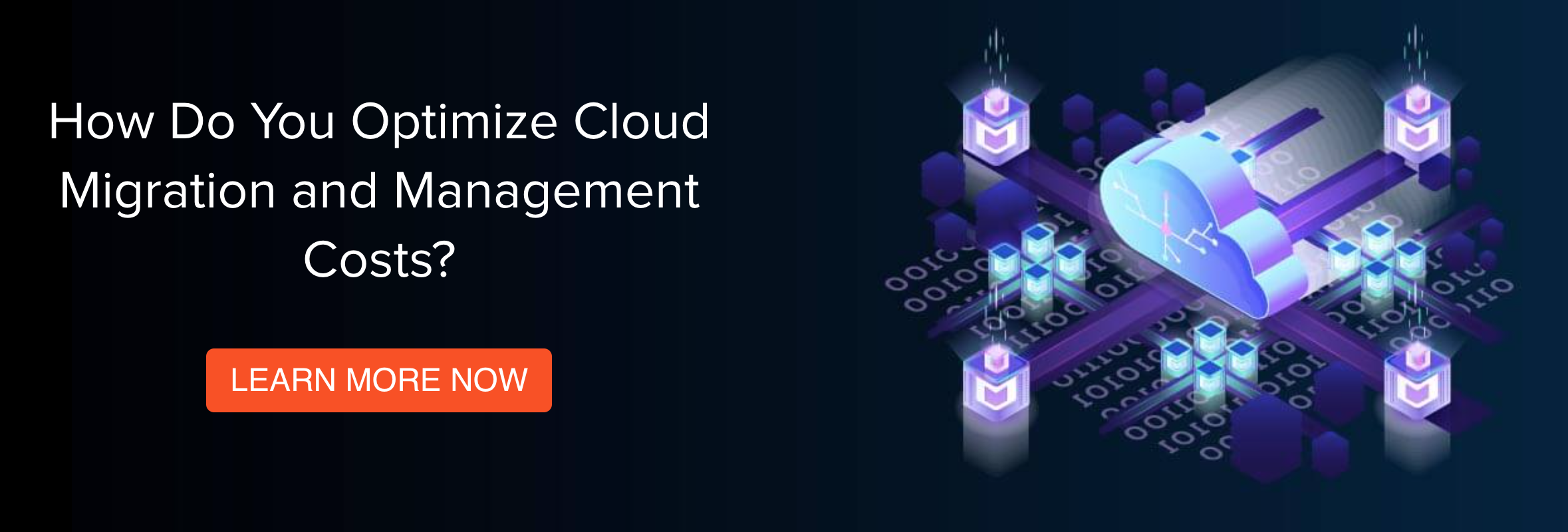As IT spending increases across the globe, the cloud skills gap only projects to get larger. Forbes recently noted that 59% of organizations in the US expect the cloud and security talent shortage to continue for at least the next two years, with 86% reporting that they believe the cloud talent shortage will continue to cause delays to their projects and hamper their ability to deliver working products.
 This isn’t a new problem by any stretch of the imagination, but its implications get more serious every year. In 2015, Amazon predicted a 400% increase in IaaS adoption over the following three years—and a quick look at the competitive landscape right now should tell you that their estimates couldn’t have been too far off. This means that there are countless businesses around the world who are trying update their infrastructure to run in the cloud, or who are trying to refactor their applications as SaaS offerings, or who are simply trying to update their legacy applications who are hitting a wall because their in-house teams can’t manage it.
This isn’t a new problem by any stretch of the imagination, but its implications get more serious every year. In 2015, Amazon predicted a 400% increase in IaaS adoption over the following three years—and a quick look at the competitive landscape right now should tell you that their estimates couldn’t have been too far off. This means that there are countless businesses around the world who are trying update their infrastructure to run in the cloud, or who are trying to refactor their applications as SaaS offerings, or who are simply trying to update their legacy applications who are hitting a wall because their in-house teams can’t manage it.
Of course, the flipside is that countless businesses successfully deploy cloud-based technology every day without incident. So how do they do it? In other words, how hard is it, really, to find resources with the cloud computing skills you need—and how should you go about finding it?
Why the Cloud Requires Specialized Skills
Right off the bat, let’s talk about all of the reasons that specialized cloud knowledge is so important. There continues to be a pervasive myth that it’s possible to perform cloud migrations without first developing an overarching strategy. “The cloud is suited to Agile methods,” the reasoning goes, “so we’ll be Agile about it and not work from a carefully crafted plan.” Not only is that not Agile—it’s also not the right approach. To see why, let’s quickly discuss a hypothetical application modernization pass.
Let’s say you’re a manufacturer, and you want to move your ERP to the cloud. Typically, there’s a few different buckets your migration might fall into.
- Rehost: This is a typical “lift and shift” migration. You’re moving your application to the cloud with very few changes, and your time and labor costs should be comparatively low. How feasible this is will depend on the exact specifications of your technology and your cloud hosting plan.
- Replatform: This one is the next rung up in terms of effort. You’re not redesigning the application from scratch, but you are making significant changes to optimize it for a cloud environment.
- Refactor: In this scenario, your existing ERP isn’t going to work in the cloud without some major renovations. This means the project is potentially going to be quite large and complex, and will necessitate complex cloud architecture considerations. While a smaller team with some cloud experience might have been leveraged pretty easily for a “lift and shift,” it’s unlikely that that’s going to cut it in this instance.
- Repurchase: In other words, ditch your current ERP and buy a new one entirely—presumably one that has cloud native capabilities. You might decide on this tack because it really is time for an update to how your ERP empowers your business, but some businesses wind up with this option because the amount of labor involved in refactoring just doesn’t seem doable.
Now, it might seem like a manufacturer with limited cloud skills would still be able to perform a straightforward rehosting or maybe even replatforming. But here’s the catch: in order to know which if these options is the right one, you already need to have a high baseline level of cloud understanding.
At the very least, you’ll need to have a catalog of which workloads are potentially going to be moved, and how those workloads interact with different cloud service models and budgeting questions (i.e. which workloads make sense for cloud deployments and which don’t). Without that level of understanding, you might find yourself refactoring your ERP in such a way that creates volatile seasonal workloads while misconfiguring your instances such that you’re paying for unused capacity more often than not. Or, you might be put off by the complexity of a particular workload and wind up repurchasing when you could have simply rehosted.
Tactics for Bridging the Talent Gap
You don’t need an entire team full of cloud experts to figure out the best path forward for your ERP migration—but the deeper you get into the migration, regardless of the method, the more resources you’ll need. At that point, you’ll have to confront the skills gap head on. Broadly, speaking, you’ll have three options:
- Hire from outside: The most obvious option (bringing in new full-time employees who can architect, manage, and monitor cloud migrations) is also the one that’s made most difficult by the talent shortage. If you can find—and afford—experienced cloud professionals, they’ll certainly be a boon to your team. But this is easier said than done these days.
- Upskill your existing teams: As a long-term strategy, acquainting your current bench of developers with the tools, techniques, and technologies that define successful cloud operations has much to recommend it. It’s not, however, something that can be accomplished overnight.
- Outsource: Outsourcing gets a bad reputation, but in reality it can be both an efficient way to extend your team’s capacity and a means of renting out serious cloud expertise. For a complex refactoring project, a true partner can help you avoid some of the more common cloud pitfalls and help you manage cloud computing costs in the process. The tradeoff is that these teams likely won’t come in with any domain-specific knowledge of your industry.
In the long term, it’s not unusual to see a mix of these three strategies. Given that fact, it’s important to remember the ways in which they can serve as complements to one another. An outsourcing partner with real cloud expertise can, for instance, give you insights into best practices that make upskilling existing resources that much easier. By the same token, those same outsourced teams might be positioned to help you address capacity concerns elsewhere, e.g. by offering DevOps as a service and thereby freeing up your internal resources for more specialized cloud migration and management tasks.
Ultimately, by ignoring the whole spectrum of options here, you run the risk of significant delays in your cloud project. This might look like a project that’s been in development for multiple years blowing past its deadline, potentially putting all of your ROI calculations out of whack. If the project involves rolling out a new cloud app to customers, you’re looking at the possibility of much slower revenue growth than anticipated, with much higher costs in the meantime. If you’re delayed when it comes to modernizing your own technology stack, you’re potentially going to have to keep dealing with high computing costs and poor time-to-market delivery capabilities, all while throwing more and more money at the problem.
Cloud Migrations vs. Ongoing Management
Now that we’ve talked about why the cloud skills gap is such an issue, let’s widen our focus a little bit to encompass the entire cloud lifecycle. One of the reasons that the skills gaps persists is that businesses think of cloud migrations as the be-all end-all of cloud skills and expertise. In point of fact, the cloud lifecycle is more complex than that, and cloud experience is applicable across a whole host of different activities:
- Procurement, i.e. leveraging an understanding of the market for cloud services into actually choosing the right SaaS products, IaaS configurations, and cloud hosting providers.
- Cloud management, which encompasses the slate of necessary, ongoing activities that occur after a migration. This typically begins with right-sizing your instances—since there’s some amount of guesswork involved in the initial spin-up—and then monitoring cloud usage over time with an eye towards reducing or optimizing costs. If this step falls by the wayside, there’s a risk that you’ll rack up huge bills while paying for unused instances.
- Physical infrastructure management, or the remote management of physical assets like laptops and tablets. At workforces around the world become more remote, the ability to manage not just your cloud infrastructure but the ways in which internal users access that infrastructure is becoming increasingly crucial. This is where tools like Microsoft Intune and other MDM (mobile device management) solutions can come in—if you have the knowledge and capacity to configure them correctly from a security and data-loss prevention perspective. Cloud security skills are just as hard to come by as anything else.
- Cloud troubleshooting and support, i.e. the ability to help internal users on cloud platforms and applications to keep the wheels turning. Imagine if you put all those person-hours into refactoring a cloud-based ERP, only to find that your inventory planners struggled to use it because of unexpected bugs. If there’s someone on hand to help remediate those bugs or create workarounds, you have a much better chance to avoid the sorts of technology snafus that can jeopardize your time-to-market and your bottom line. As with the other items on this list, you need more than just capacity: you need people who know this technology backwards and forwards.
We mentioned above that DevOps, being a fairly one-size-fits-all function, can actually be outsourced fairly easily to a team with real cloud expertise. Well, so can most of the items above. Thus, while you might be leveraging the full power of your own teams for a particular refactor, once the application has been migrated you could rely on a nearshore team to provide troubleshooting and support, or even active management. This way, you’re able to right-size your deployment and get your internal users the support they need without scrambling to ramp up more in-house cloud resources. In this way, you not only optimize costs—you also give back capacity to your in-house developers, who can instead focus on delivering your next game-changing product.
Learn More About Intertec's Cloud Solutions:
Intertec’s teams have hands-on experience in developing and migrating applications on leading cloud platforms. In addition to design and development, we provide a complete range of application testing, deployment and ongoing support services, including managing physical infrastructure and offering outsourced DevOps teams. Click here to learn more. Prefer a personal consultation? Go ahead and schedule a meeting with us here!









